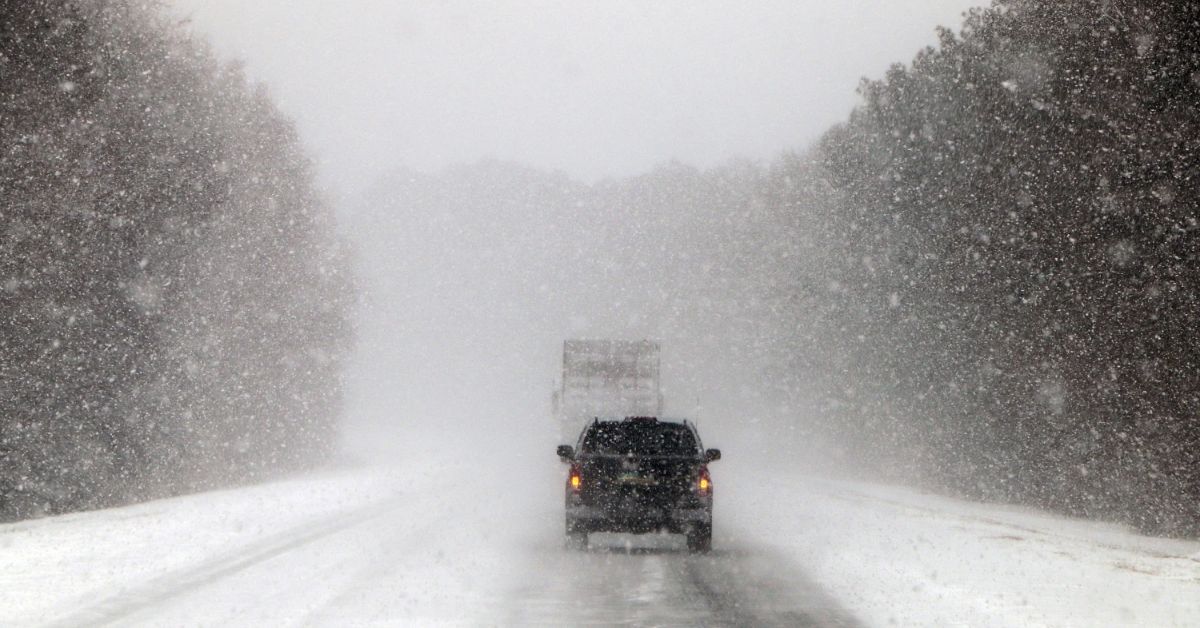A huge winter storm is expected to hit the US and parts of Canada just in time for the holidays, bringing cold temperatures, strong winds, and blizzard conditions.
It’s likely to mess up plans for millions of people during one of the busiest times of the year for travel.
The storm is expected to hit the Midwest and Great Lakes region, including Ontario, Canada, later this week before moving toward the east coast. Officials are warning that it could bring record-low temperatures that could be dangerous to people’s lives.
It could even turn into a “bomb cyclone,” an unofficial name for a strong storm that gets stronger quickly. But experts say that Americans can stay safe whether they stay at home or hit the roads by taking a number of steps.
How To Stay Safe In A US Winter Weather Bomb Cyclone?
Americans in the upper Midwest and Great Lakes, where more than a foot (30 cm) of snow is expected in some places, should follow a rule of thumb for preparing their homes for storms. Eric Stern, a professor at the University of Albany’s College of Emergency Preparedness, Homeland Security, and Cybersecurity, said, “The first 72 are on you.“

This means that people and families should have enough food, water, and important medicines to last at least three days or 72 hours.
Prof. Stern said it’s smart to be ready with supplies for even longer than that, especially for people who are weak like the elderly and people with health problems.
Michael Muccilli, who runs the National Weather Service’s winter program, says that people should stock up on first-aid supplies, a flashlight, and batteries in case the power goes out. People should also have an emergency source of heat, such as a generator with good ventilation, and a carbon monoxide detector that works.
Some useful winter supplies are ice-melting salt and a spade to help clear snow from sidewalks and driveways.
On Wednesday, the winter storm is expected to hit the Midwest and Great Lakes.
Latest News
- NASA Gets Unusually Close Glimpse of Black Hole Snacking On Star
- Baby Life Probably Saved By Umbilical Stem Cells
How To Be Safe While Driving In A US Winter Weather Bomb Cyclone
Experts say that there are times when it’s just too dangerous to drive.
Mr. Muccilli said that if a blizzard warning is out for your area, it’s best to stay home and wait until the warning is over.
When there is a blizzard, you can’t see more than 400m (less than a quarter of a mile) and the wind is going faster than 35mph (56km/h). “When these two things happen together, it can get so white that you can’t even see in front of you,” Mr. Muccilli said. “You don’t want to be outside in that kind of storm.”
For longer trips, drivers check the weather forecasts and conditions at both the destination and key points along the way.
Before starting a winter trip, Dr. Stern said, travelers, should be “well rested, well fed, and well hydrated.” He also said that their vehicle should be in good shape and have snow tyres.
Experts say that before going out, drivers should make sure their car has a full tank of gas and an emergency kit with warm clothes, a phone charger, jumper cables, a first aid kit, salt, a snow shovel, and a snow brush in case the car gets stuck.
Once on the road, people should give themselves more time to get where they’re going and drive more slowly than usual because the roads may be icy.
Dr. Stern said to reevaluate if things turned out to be more dangerous than expected. “Don’t let your pride keep you from going back or looking for safety along the way,” he told them.
A blizzard from Buffalo dumps snow on western New York.
And experts say that people who are stuck in traffic should almost always stay in their cars as long as they have heat. Going outside in a blizzard can cause hypothermia and make drivers lose their way.
Mr. Muccilli said that people who are stuck but still have gas should open a window a little and run the engine for 10 minutes at a time. This will keep the car warm without using up all the gas.
In an emergency, drivers can tie a brightly colored cloth to their car’s antenna or door so that rescuers can see them.
Mr. Muccilli said that people should be careful when driving even after the storm has passed. The system will leave behind windy conditions that could make traveling dangerous for at least a day or two.
Keep following our site NogMagazine.com for the latest updates.